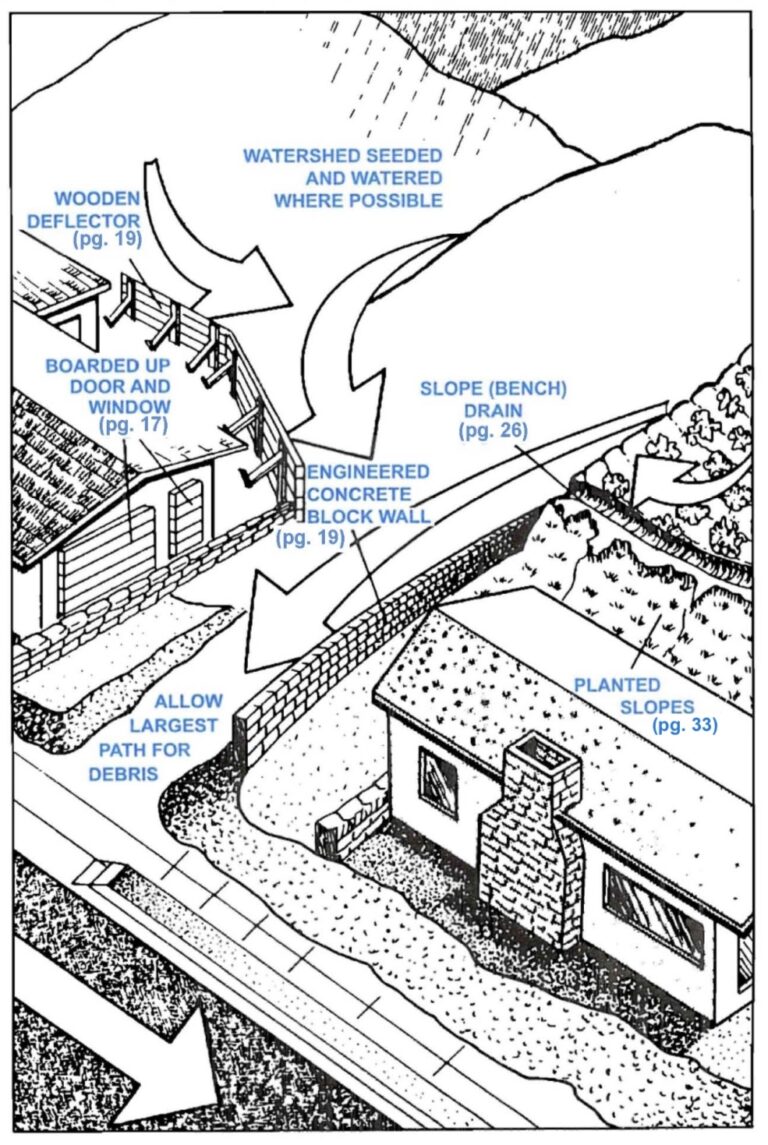
Residents must complete the Local Fire Debris Removal Program application and send that form to franklinfire@malibucity.org or take the form to city hall by Feb. 28
As Malibuites impacted by the Franklin Fire try to remove debris on their property caused by the disaster and, to the extent possible, attempt to protect both scarred hillsides and landscape and structures when rains arrive, several area resources can provide sage advice to assist with such efforts.
Debris removal
The City of Malibu provides a debris removal program to help residents. Prior to any debris removal, residents must complete the Local Fire Debris Removal Program application and send that form to franklinfire@malibucity.org or take the form to city hall by Feb. 28.
Notably, the application and its appended information is comprehensive and licensed contractors must be utilized. A work plan and reports outline must be submitted to the city informing how an owner proposes to perform the work andthe process also specifically addresses removal of trees — often the city biologist must approve such removal. It all begins by filling out the application at caloes.ca.gov/wp-content.
Before debris removal, all properties in the burn areas must be evaluated for household hazardous waste. Residents are advised to email FranklinFire@malibucity.org for more information or visit City Hall at 23825 Stuart Ranch Road on Mondays through Thursdays from 7:30 a.m. to 5:30 p.m. and Fridays from 7:30 a.m. to 4:30 p.m. When the HHW inspection is completed, the city will inform owners, whereupon they can have trash dumpsters delivered to their property. One can refer to the city’s Permitted Waste Haulers list for available options. The list is at malibucity.org.
And then the rains came
Dealing with possible flooding and debris flow after a wildfire is another challenge property owners must address. The Department of Public Works in Los Angeles County has a free homeowner’s guide to provide details regarding dealing with flooding, soil erosion prevention, mudslides, and debris flow after a wildfire. The guide is available online at lapdw.org/wmd/Homeowners.
The department notes that debris, including rocks, soil, mud, trees or vegetation can be transported by stormwaters and can contain sufficient strength to destroy or move objects such as cars and buildings in their path.
Sandbags and KRails
Of course, those with properties that are most impacted by fire must also prepare for flooding using additional strategies as well.
“Sandbags are great but when an entire mountain slope is denuded, I also resort to KRails,” Kirby Kotler said.
The department’s guide sets forth detailed information about how to fill and place sandbags, which, when properly positioned, can redirect storm and debris flows away from homes, barns and other structures. Deflection devices and door and window protection tips are provided.
“Concrete block walls that are designed and built to withstand loads caused by water and debris are excellent for protection and durability and, in many cases such walls can be adapted to become part of the landscaping,” The department’s guide advises, noting that the placement of slope bench drains along hillsides is also helpful to protect against flooding. To the extent possible, watersheds in and near properties should be seeded and watered as that also helps control water flow.
When revegetation works best
“A person doesn’t want pounding rain to hit exposed soil directly,” said Chris Loguidice, owner of Environmental Tree Care. “The best thing to do to mitigate rainfall on barren soil is to net hillsides with big rolls of netting or to cover them with hay or yard waste.”
February is traditionally a heavy rain month in Malibu, Loguidice stated adding, “I never suggest removing plants right away after a fire as most plants are not burned all the way through to the roots and, if left alone, the root structure and stumps generate new plants.”
If property owners are bothered by unsightly charred plants, he suggests cutting off the top of the affected plants and putting them into clumps, which he notes provides excellent fertilizer.
When it comes to planting trees and shrubs, Loguidice emphasized that native plants are best.
“The only genuine native plant is the coastal oak tree, the trees with the round leaves that are throughout the Santa Monica mountains,” he said. “Other trees that work well include the Toyons and Lemonberry. It is wisest to select species that are drought resistant and deep-rooted as that helps to stabilize a slope.”
The county’s guide also sets forth plant options advocated by the County’s Forestry Division, advising that property owners select plants, shrubbery, ground cover and grasses that are fire resistant, low maintenance, readily available andeffective for erosion control.
Selections for new shrub plantings may include Aaron’s Beard, California Fuchsia, Carmel Creeper, Creeping Rosemary, Creeping Sage, Dwarf Coyote Brush, Green Lavender-Cotton, Gray Lavender-Cotton and Point Reyes Ceanothus.
Selections for ground cover planting may include Bearberry Manzanita, Trailing African Daisies, Sunrose, and Wooly Yarrow. Red Fescue and Bird’s Foot Trefoil are the best grasses to plant.
Overall, property owners must employ several strategies to prepare for seasonal rains and to deal with soil and hillside erosion.
Editor’s Note: This article was written and published prior to the Palisades Fire. Due to the fire, The Malibu Times temporarily delayed web updates to focus on covering the disaster and supporting residents who lost their homes.